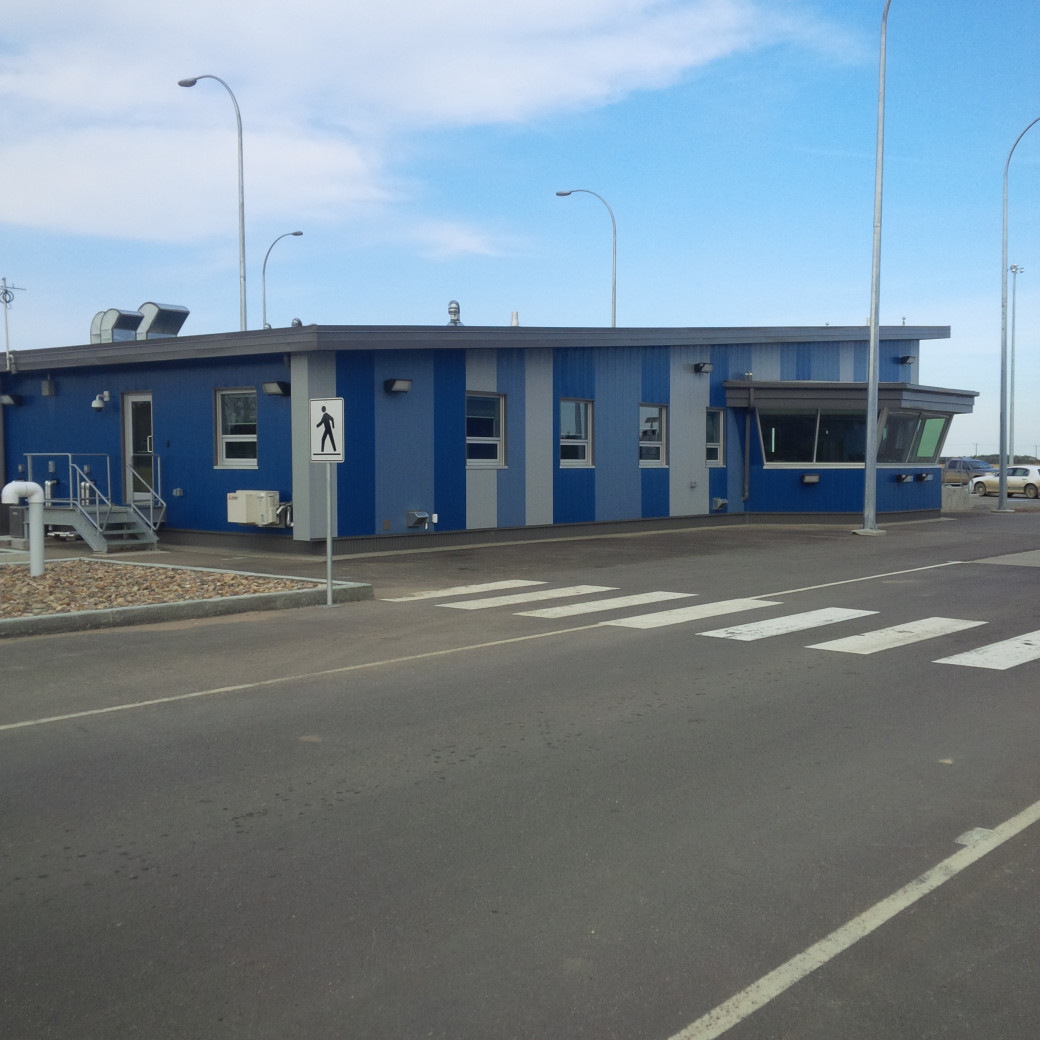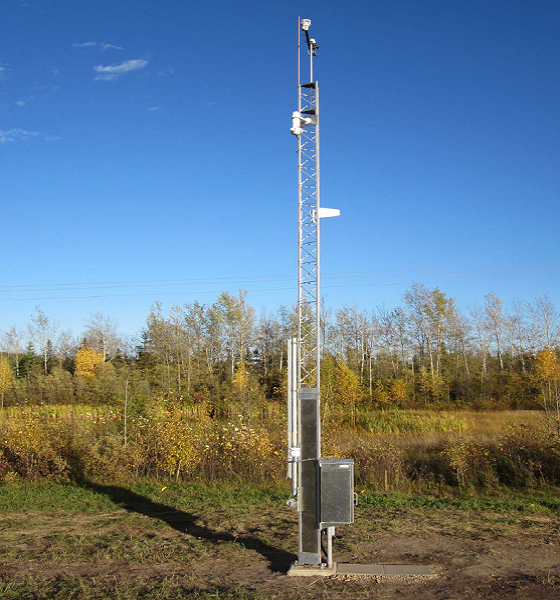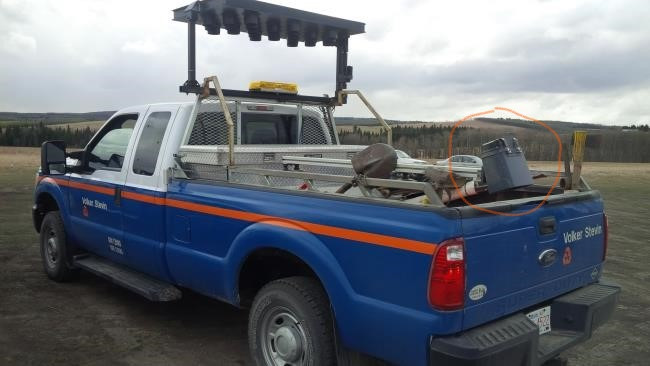Government mail service may be affected by the Canada Post labour disruption. Learn about how critical government mail will be handled.
Overview
Technology is changing how we travel. Developments such as electric vehicles, connected cars and drones provide new ways to explore the province.
Government's role is to balance innovation with safety for Alberta travellers. We work with researchers, industry and other partners to test emerging technologies and see how they apply to Alberta's:
- landscape
- roads
- users
- weather
Timelines for introducing most of these technologies into our daily lives are constantly changing. The Government of Alberta is monitoring them closely and continually preparing for changes and possible impacts to Alberta's transportation network.
Intelligent Transportation Systems
Intelligent Transportation Systems (ITS) are technologies that help improve traffic safety and movement. ITS Canada defines Intelligent Transportation Systems as the application of advanced and emerging technologies (computers, sensors, control, communications and electronic devices) in transportation to save:
- lives
- time
- money
- energy
- the environment
ITS devices installed in vehicles, roads, bridges and terminals collect information, such as:
- road and weather conditions
- traffic speed
- volume and delays
These systems involve vehicles, drivers, passengers, road operators and managers, all interacting with each other and the environment, and linking with infrastructure systems to improve the safety, competitiveness and capacity of our highway network.
Information collected goes back to road users through a variety of channels, including:
- 511 Alberta
- variable message signs
- local media
Advanced and emerging technologies
Smart Roadside Inspection System

Alberta's Smart Roadside Inspection System (SRIS) is an electronic management and enforcement system that automatically identifies high-risk and problematic commercial vehicles from the side of the road, without interfering with traffic flow.
Using multiple sensors, cameras and business-rule based screening, SRIS provides Alberta's Commercial Vehicle Enforcement Branch with tools to focus more effectively on commercial vehicles that pose the most risk to transportation safety. SRIS provides important information on commercial vehicles passing through vehicle inspection stations and allows Commercial Vehicle Enforcement Peace Officers to take further action, if needed.
The first fully operational SRIS was installed at Leduc Vehicle Inspection Station in 2012. This strategic approach to safety was undertaken to reduce serious injuries and fatalities involving commercial vehicles.
Alberta's SRIS includes several "firsts" in Canada including:
- HAZMAT (dangerous goods/hazardous materials) placard reading to identify and flag commercial vehicles transporting dangerous goods
- Automated thermal imaging solution integrated into a screening system to automatically screen and identify high-risk commercial vehicles travelling through the province
Learn more about Alberta's commercial vehicle inspection stations.
511 Alberta
511 Alberta provides the province's official road reports, helping drivers plan trips and travel safely. Interactive maps provide real-time information on:
- highway conditions
- traffic speeds
- weather information
- construction updates
- incident reports such as construction and road closures
- ferry crossing information
- national/provincial parks information
- border crossing wait times
- integrated, real-time maintenance vehicle locations
- alternative fuel station locations
- cameras and highway messaging signs
- over-dimensional load movements
You can access this information:
- online
- by phone (call 511 toll-free)
- through the 511 Mobile app
Road Weather Information System

Alberta is one of Canada's leaders in the use of the RWIS.
Since 2005, more than 100 RWIS stations have been installed on the provincial highway network and that number continues to grow.
These stations house sensors and cameras that track and gather road and weather conditions information in real-time reports to generate current conditions and forecasts.
Information is used by:
- road maintenance crews, who use the system to plan winter road maintenance work and prepare for winter storm events
- 511 Alberta, which provides real-time road weather information and images from station cameras to the public
- Alberta Transportation and Economic Corridors staff, who integrate RWIS with other ITS technologies, such as dynamic message signs and the Traffic Management Centre
Read more about RWIS.
Mobile Road Weather Information System (Mobile RWIS)

Alberta Transportation and Economic Corridors has deployed 20 mobile versions of RWIS to record road conditions.
A Mobile RWIS unit is a downward-facing sensor installed on specific road maintenance vehicles. The sensor collects information about the road, including direct measurements of its:
- pavement condition
- pavement temperature
- presence of chemicals
- friction
Mobile RWIS technology provides improved situational awareness and decision support for road maintenance operations. It also provides more geographically-specific observations for locations between RWIS stations, at a lower cost.
Mobile RWIS offers several advantages over RWIS. For example, Mobile RWIS:
- provides additional parameters beyond what is available from RWIS, such as friction and ice percentage
- collects road and weather information along remote routes with variable climates where installing fixed stations is not cost-effective
- provides weather observations over areas that may not have had observations, such as on/off ramps, overpasses, secondary highways and in-town roads
Alberta Transportation and Economic Corridors is exploring how Mobile RWIS could be integrated into 511 Alberta for real-time, enhanced situation awareness of road conditions.
Maintenance Decision Support System (MDSS)
MDSS is a relatively new technology that works with the RWIS system to recommend road maintenance treatments in winter. Its knowledge base incorporates road treatment plans from all highway maintenance contractors.
MDSS road treatment plans are dynamically matched with weather and road condition forecasts generated by the RWIS system. This information is used to recommend snow plowing action, chemical type and application rate for expected weather and road conditions.
The Alberta MDSS was the first system in Canada to be implemented provincewide.
Emerging technologies
Several emerging technologies have the potential to change transportation systems around the world.
Although these technologies remain unproven, they are gaining momentum and interest, and government is tracking their progress.
Self-driving vehicles
Highly automated vehicles, commonly known as self-driving or autonomous vehicles, operate without the driver needing to control functions such as steering, acceleration and brakes. This technology is intended to improve traffic and driver safety and convenience.
So far, several self-driving vehicle trials have taken place in Edmonton, Calgary and Wetaskiwin. The trials have included the use of a self-driving shuttle guided by 3D sensors, high-accuracy GPS and cameras to guide its movements.
This form of transportation continues to be explored to ensure safety and privacy considerations are addressed.
Connected vehicles
Connected Vehicle Systems may transform the way we travel through the creation of a safe, interoperable wireless communication network — a system comprised of:
- cars
- buses
- trucks
- trains
- mobile devices
- traffic lights
- bridges
- other roadside infrastructure
All work together to make transportation safer, more efficient and secure.
A connected vehicle ecosystem is emerging in which connected vehicles would communicate critical information in real-time with other vehicles and surrounding roadside infrastructure, such as traffic lights and electronic signs.
Connected vehicles could receive warnings about hazards, such as pedestrian alerts, icy roads, vehicles following too closely or traffic congestion.
Drones
Remotely piloted aircrafts, commonly referred to as drones, are power-driven aircraft that fly without a human operator onboard.
Remotely piloted technology includes all related supportive equipment needed to operate the unmanned aircraft, such as:
- software
- data links
- control stations
- communications and navigation equipment
Government legislation for drones
Transport Canada has jurisdiction over flights through the:
New federal regulations for drones come into force on June 1, 2019 and apply only to drones between 250 grams and 25 kilograms, whether they are for recreational or commercial use.
Research and innovation
ACTIVE-AURORA Project
ACTIVE-AURORA is the first network of test beds for connected vehicles in Canada:
- ACTIVE is based in Edmonton, Alberta
- AURORA is based in Vancouver, British Columbia
The Active-Aurora initiative was launched in 2014 as a multi-phase collaborative effort by the:
- Government of Canada
- Government of Alberta
- City of Edmonton
- University of Alberta's Centre for Smart Transportation (CST)
- University of British Columbia
Learn more about the ACTIVE-AURORA project.
Minister's Awards for Transportation Innovation (MATI)
This awards program recognizes innovative Albertans and organizations that demonstrate excellence in several categories of transportation innovation:
- design
- construction
- environment
- safety
- operations
- transit/accessible transportation
Learn more about the MATI awards program, including how to enter.
Contact
For more information about emerging transportation technologies:
Hours: 8:15 am to 4:30 pm (open Monday to Friday, closed statutory holidays)
Email: [email protected]
Address:
Emerging Technologies and Foresight
3rd Floor, Twin Atria Building
4999 98 Avenue
Edmonton, Alberta T6B 2X3